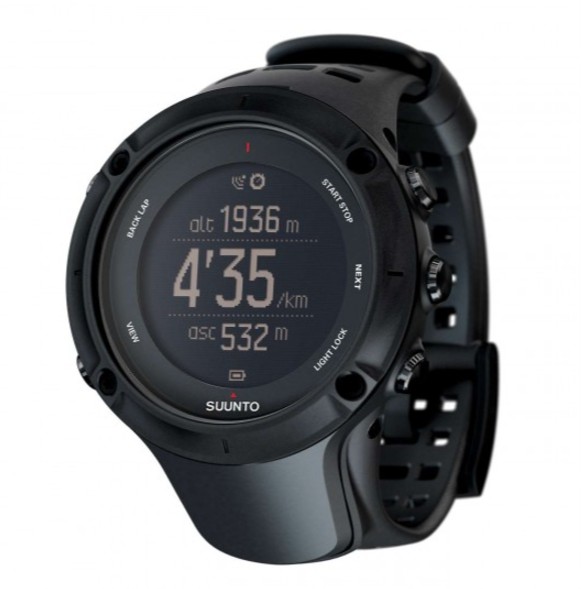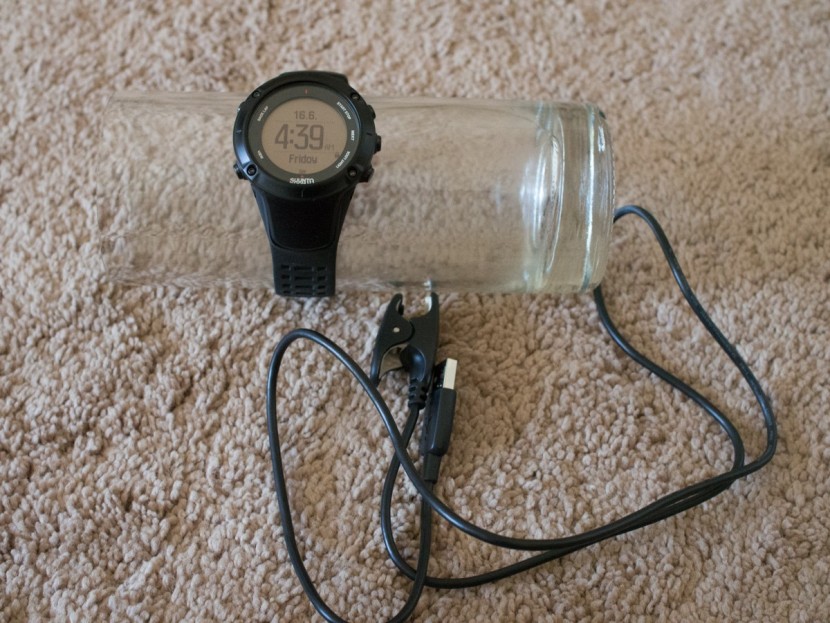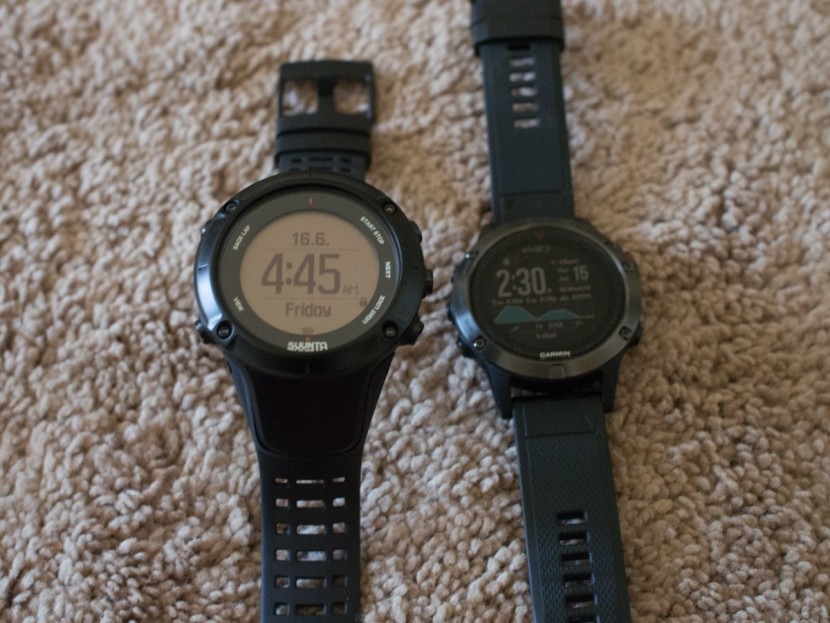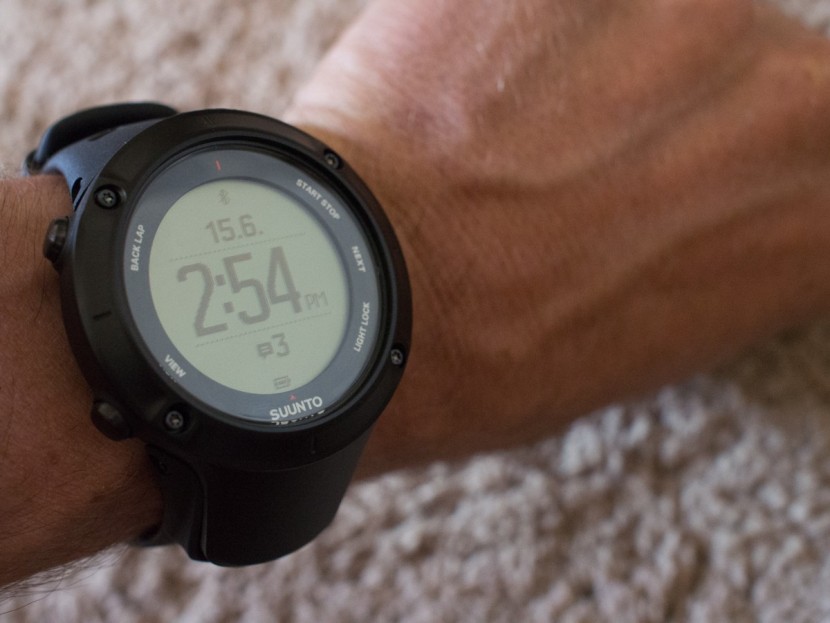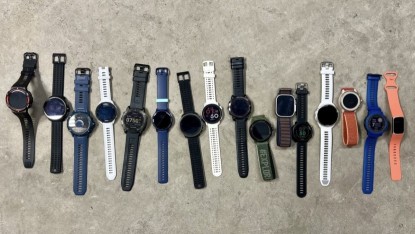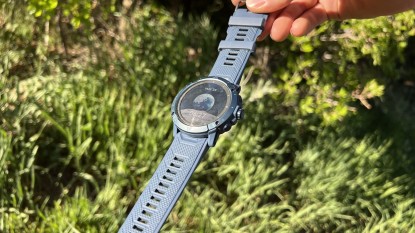Suunto Ambit 3 Peak Review
Our Verdict
Our Analysis and Test Results
The Suunto Ambit 3 Peak is a full-featured training device for athletes of all kinds.
The Ambit differs from the Garmin models primarily in the inclusion of wrist-mounted heart rate sensors. The Ambit omits a heart rate sensor in exchange for altitude and temperature sensors, which watches like the Apple do not have. With these feature differences forming the backbone of the distinctions, a few other things tip the balance. The subtleties are detailed below.
Features
This is not the most feature-rich watch we tested. Notably, the Garmin Forerunner 945 offers more functionality. Interestingly, this compromised and nuanced feature set makes the Ambit3 perhaps more appealing. The features omitted from the Ambit3 Peak are those that few users will need. Like a swiss army knife, more tools doesn't always make it better. You want the right tools. The Ambit3, for most outdoor athletes, offers all the right features and nothing more. The GPS, smartwatch, barometer, accelerometer, and time instrumentation combine in a number of ways to communicate distance, speed, laps, time, and overall performance. Again, it must be said that the Ambit3, in its basic, default orientation is a high-end, comprehensive device.
If you don't need the barometric altimeter, the Ambit3 is also available in other versions. For head to head testing against the best of the best, we aimed for the top of the heap with the Peak version. However, explore Suunto's other options for even more carefully curated feature sets. The Ambit3 Peak is the company's most feature-rich tool.
Ease of Use
Suunto has been making compact, wrist-mounted electronics for a long time. This and their Scandinavian attention to detail make for a very easy-to-use package. The user interface is limited to a combination of button pushes, which can be very cumbersome or elegant and intuitive. The Ambit falls into this latter category. All the Ambits we've tested (and we have used each generation over the years), in fact, share the same on-device and PC interface. Suunto does an excellent job of triaging tasks. Most of the pre- and post-trip device interaction requires syncing to your computer or smartphone app. This allows for keyboard, mouse, and web-based communication with the Ambit.
Only the bare minimum of tasks (starting and stopping recording, adjusting time zones, toggling between sports, navigating pre-ordained routes) are conducted on the device itself. Everything else (setting up units and user information, customizing screen views, reviewing graphed data, creating routes to follow, etc.) is done through Suunto's MovesCount website and smartphone app. The site and app are easy to use and reliable. The tasks that require direct interaction with the watch are similarly intuitive and clear.
With the customizable nature of the Ambit, plus MovesCount, the watch can be configured to show as much or as little information as you like during your training or event. Beyond that, you can even create special sport modes. For instance, you can set up your running mode to show distance and pace per mile, your cycling mode to show elapsed time, distance, and speed in miles per hour, with your swimming mode showing strokes per minute, distance, and elapsed time. Further customizability is virtually infinite with Suunto's smartwatch app style platform. You and thousands of users around the world can develop custom applications to use on your Ambit. The sky is the limit.
With all this functionality, it must be reiterated that the simple utility of the entire Ambit family is remarkable. Even in its most basic, default configuration, the Ambit is comprehensive. Dive in deeper, and you have an unprecedented training tool.
Battery Life
Testing battery life of a GPS watch as objectively as we would like is problematic. In addition to battery size and manufacturer's design attributes, battery life is a function of many many variables; some variables change with the user, what is recorded, how that data is transferred, and even the rate of travel (in some cases). What we are left with is anecdotal evidence, comparing our average and collective experiences with each watch to the others. In this way, we have sized up the Ambit3 to have a battery life that is competitive with the best of the best. For all the features it has, the battery life is admirable. Even when using all the sensors and antennae, we can get well over a full 24 hour day of use from the Ambit3. When using it as a smartwatch, with only occasional and short instances of recording specific activity, the Ambit3 lasts over a week.
Accuracy
In our testing over a known distance, the Ambit3 fared near the top of the class. The Suunto uses a motion sensor to monitor the GPS data. GPS satellite data is inherently flawed. Especially in these small devices with small antennae, occasional outlying data points will pop up. The wrist-mounted, accelerometer-equipped Ambit3 can compare these occasional errors to the rhythm of a walking or running wrist. If it doesn't “add up,” that particular GPS point is ignored, and the distance and rate are calculated using those that “make more sense” on either side in space and time. However, if arm and wrist motion is irregular, and a GPS error occurs, the watch won't catch it. In the end, the Ambit on its own (as tested) is accurate and useful, especially as compared to the competition.
In our repeated and repeatable running track test, we found the distance information captured by the Ambit to vary from the actual by just 1%.
Design
The Ambit3 is not a compact watch. In assessing portability, size is the primary consideration. Also, we evaluate the shape and smoothness of the exterior case. Since the Ambit has an excellent button lock, it can also be carried in one's pocket. This is extremely rare, but perhaps an important consideration for some activities. Notably, rock climbers might want to use a GPS watch but cannot wear one on their wrist in that setting. For pocket carry, the Ambit3 is bulky. The housing wraps a little around your wrist, and the band is rigidly attached to the watch. It doesn't sit flat in your pocket.
Ease of Set-Up
It is not perfect, but the Ambit3 is as easy to set up as any of our top-performing GPS watches. You'll have no problem taking a little time, plugging into your computer or firing up the smartphone app, and getting the Ambit dialed in for your needs. It has virtually infinite functionality and customizability. However, the beauty is that the default, out-of-the-box function is high-end and comprehensive. A small user manual helps get you started but is hardly necessary.
Value
This is a piece of equipment scoring near the top of our charts. It is endlessly customizable, and Suunto appears committed to providing software updates periodically. It is not an inexpensive piece of equipment, but it is less expensive than some of its competitors, and the devoted athlete will reap the rewards of the investment for a long time.
Conclusion
For years and years, manufacturers of small electronic devices have been cramming more and more technology into wrist-mounted athletic monitors. With the early offerings of the Ambit family and its Garmin competitors, the market finally found out where “enough is enough.”


